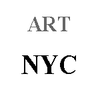I don't know if my childhood was happy; my adolescence certainly wasn't pleasant and was not even a good part of my youth. The guiding element, the common thread that has survived from childhood to this day, is a wonder: a curious look at the world, the desire to learn while being amazed, to find beauty even where it isn't there. It is a precious attitude formed by mixing dark and threatening elements and wrapping them in a light blanket. It was formed as a defense, just like pearls are formed. The economic and social condition in which I was immersed as a child was full of discomfort, poverty, and anger; in this context, suffering was constitutive for me: to try not to succumb to it, I had to look in other directions desperately, look for something good, something that could be saved. I wasn't aware of the mechanism; simply, when I felt pain entering me, I tried to transform it into something that could hurt me as little as possible, just like oysters do when sand enters them. Back then, I drew fantastic and alternative worlds where I could live happily. I walked through the fields looking for flowers and mushrooms, observing the animals and imagining they could talk and play with me. I went looking for treasures in an iron dump and recovered mysterious objects around which I built stories of adventure and magic. “What a strange kid,” said those who saw me from outside. “She never speaks; she always draws.”
Some added, “At least she is not annoying like other children.” Nobody had understood that my driving force was not drawing but creativity and that it was not a passion but a rescue based on the constant exercise of wonder. A point of Maria Lugones' article particularly struck me: “The lack of playfulness is not symptomatic of lack of health. I am not a healthy being in the worlds that construct me unplayful. […] I am also scared of ending up a serious human being, someone with no multidimensionality, with no fun in life. […] I am terrified of getting stuck in a world that constructs me that way. A world that I have no escape from and in which I cannot be playful”.
This reminded me of my adolescence when I began to perceive the world as a cruel place where the creation of beauty no longer had any purpose or space. Where life was meaningless and, worse, where even suffering was useless. I could have saved myself only if I had found something to save, but what do I do when it seems like nothing can be saved? I hated the whole world because it had taken away my only beautiful thing. And then I hated myself because, in this world of misery, sacrifices, and injustices, in this world of ugliness, I was forced to look like it. I didn't stop drawing, but I started doing it in a completely different way; in a certain sense, my drawings didn't create but destroyed. And they destroyed everything that, in real life, I had no power to change. There was darkness, blood, death. My creativity had become my revenge on the world. Even the texts I wrote in the diary had words as sharp as blades; they were lucid but bitter lyrics. And they hurt. Looking back at my works from back then, what amazes me is how, in reality, the wonder was anything but absent; it was present in all the drawings and poems as a wonder of and in pain. Those works are a wunderkammer built inside a deep wound. And there is great beauty in this.
What people around me saw of me was just a quiet, moody and somewhat grumpy person; one who doesn't have much to give and, in the words of Maria Lugones, one who is unplayful. It is sad, and of an indescribable loneliness, to have an internal world so rich and so alive and not find a way to show it. If what is beautiful in us does not find a way to be expressed, it stops being the most attractive part of us and becomes the one we hate the most. Today, I cannot say that I have lost my cynicism because the voids that sorrows have dug remain deep, but I can say that I have found new wonder to fill them. Now, my creative production is no longer rescue or revenge but construction. It is a pervasive desire that involves all aspects of my life; a desire to actively use the whole range of emotions that have accompanied me up to this point to build more hospitable, fairer, kinder worlds, to build them not only with my words and with my drawings, in the darkness of the room or a rainbow corner of my imagination, but to build them in everyday actions, between and with people. Because this is what creativity should be for, to allow us to develop and co-build a space that resembles us.


![[100 Challenge] Roberta Gattel_29](http://artnycnewyork.com/cdn/shop/articles/DAY_29_1100x.png?v=1730216838)